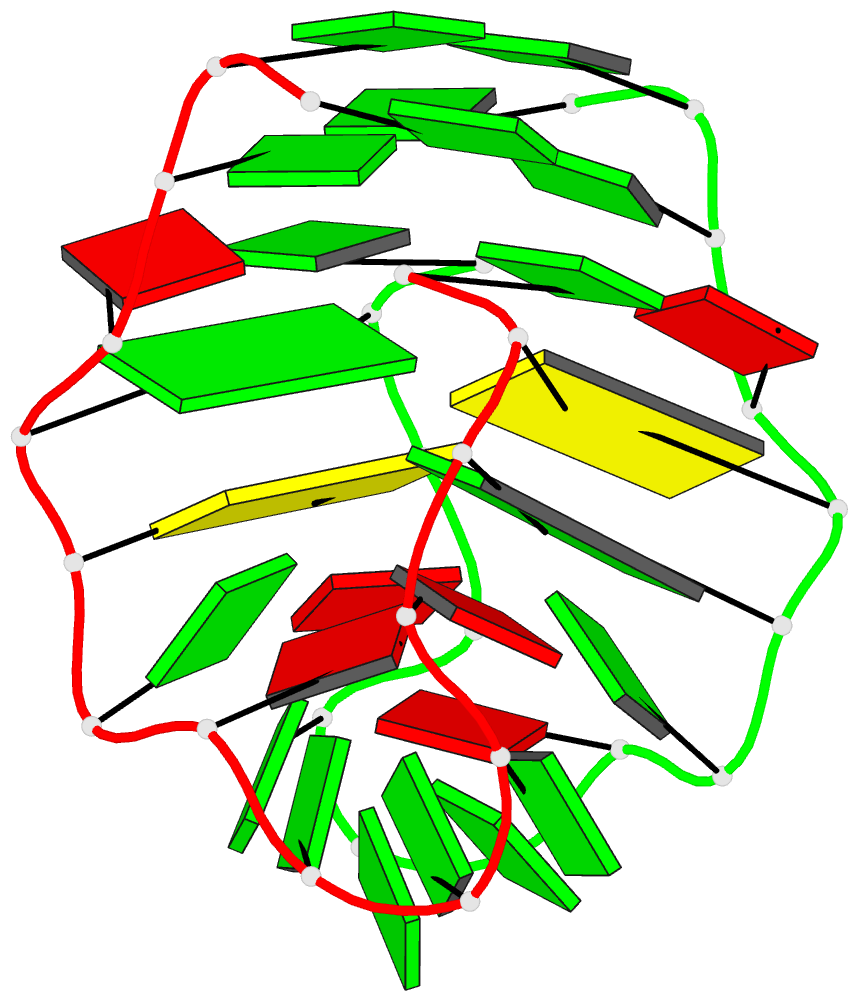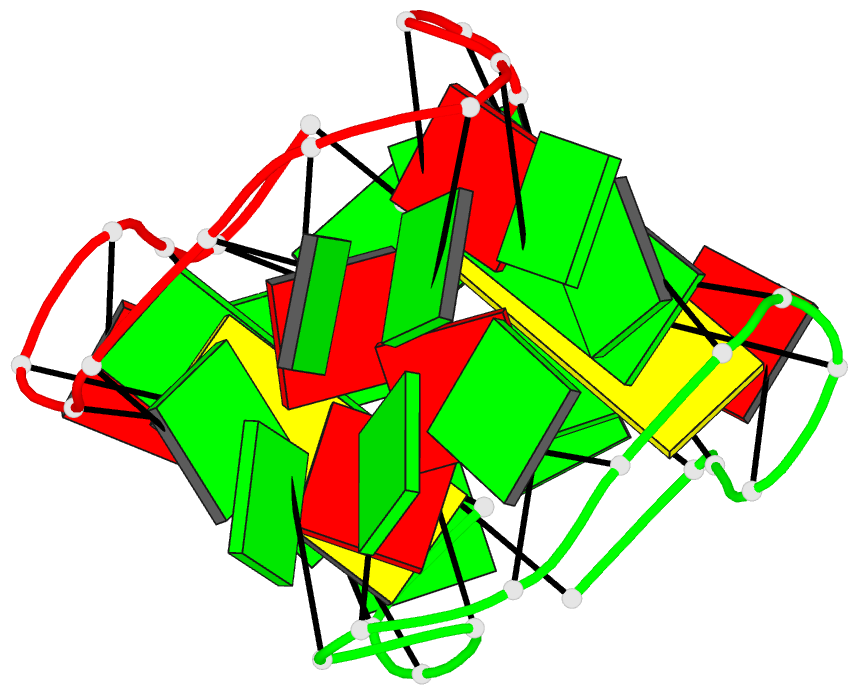Summary information and primary citation
- PDB-id
- 2mjj; DSSR-derived features in text and JSON formats
- Class
- DNA
- Method
- NMR
- Summary
- A tetrahelical DNA fold adopted by alternating ggg and gcg tracts
- Reference
- Kocman V, Plavec J (2014): "A tetrahelical DNA fold adopted by tandem repeats of alternating GGG and GCG tracts." Nat Commun, 5, 5831. doi: 10.1038/ncomms6831.
- Abstract
- DNA can form diverse higher-order structures, whose details are greatly dependent on nucleotide sequence. G-rich sequences containing four or more repeats of three guanines are expected to form G-quadruplexes. Here we show that DNA sequences with GGGAGCG repeats found in the regulatory region of the PLEKHG3 gene are capable of forming tetrahelical DNA structures that are distinct from G-quadruplexes. The d(GGGAGCGAGGGAGCG) sequence, VK1, forms a dimer. Two VK1 sequences connected by an adenine residue, VK2, fold into a monomer, which shares identical structural characteristics with the VK1 fold. Their four-stranded architectures are stabilized by four G-C, four G-A and six G-G base pairs. No G-quartets or Hoogsteen-type hydrogen-bonded guanine residues are present and the overall topology is conserved in the presence of Li(+), Na(+), K(+) and NH4(+) ions. Unique structural features include two edgewise loops on each side of the structure stabilized by three G-G base pairs in N1-carbonyl symmetric geometry.





